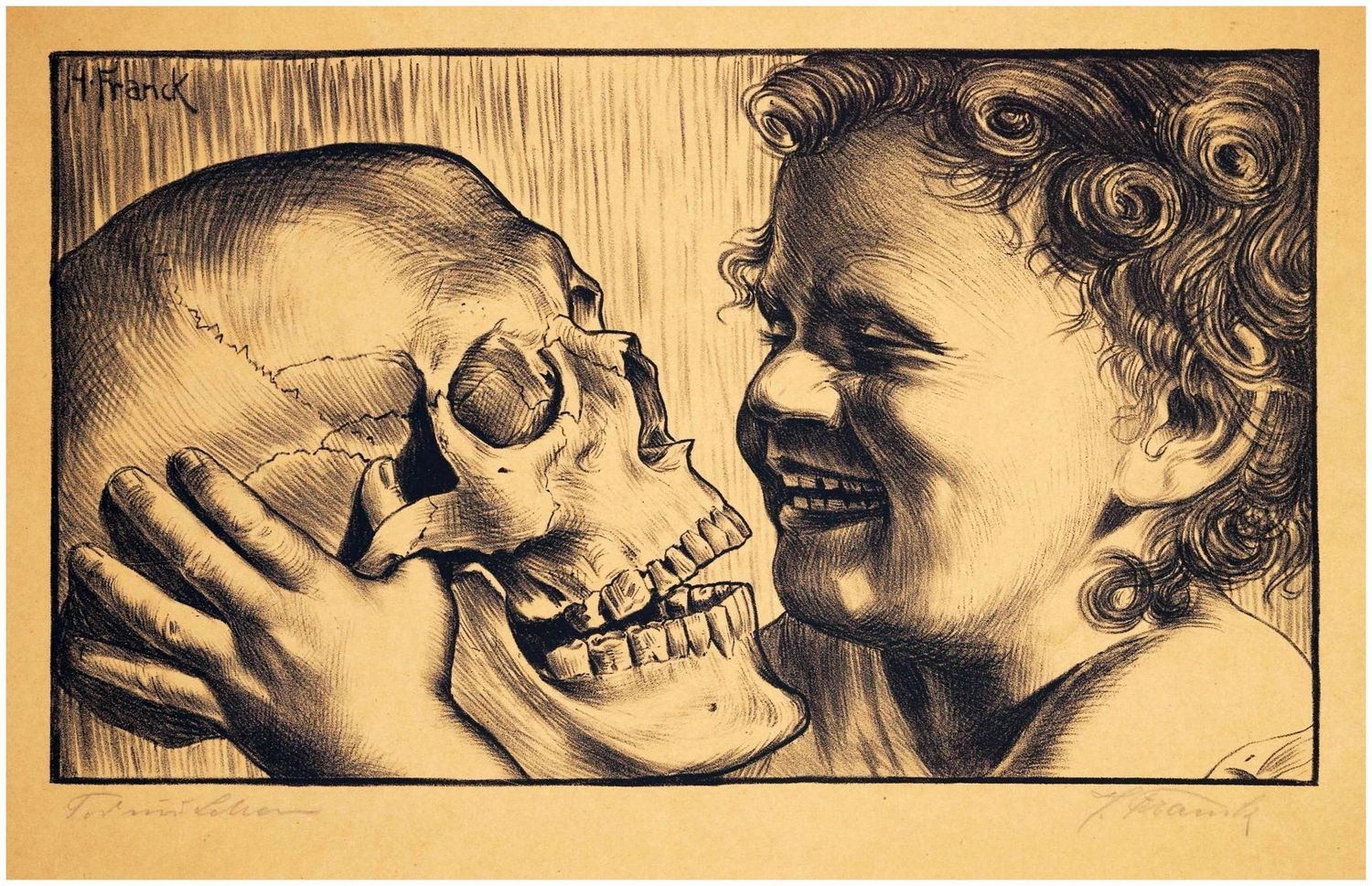Frank, Hans (1884-1948), Death and Life, 1911
Hans Frank (1884 Vienna - 1948 Salzburg), Death and Life, 1911. Lithograph, 18 cm x 31 cm (depiction), 25.5 cm x 38.7 cm (sheet size), signed “H.[ans] Frank” in pencil lower right and inscribed “Tod und Leben” lower left.
- darkened, remains of an old mounting on the verso
- United in Laughter -
Here, Hans Frank refers to the skull as a vanitas motif. In Renaissance and Baroque portraits, this motif symbolizes the transience of the sitter, whose head has become a skull over time. Penitents, such as St. Jerome, often hold skulls in melancholy contemplation. Here, however, the boy stands up for life itself. He boldly grabs the skull and laughs at the absurdity of life and death. The laughter of death joins the laughter of life, and vice versa. The child's thumb penetrates the skull's cheekbone to illustrate the inseparable connection between death and life.
About the artist
Hans Frank studied at the Vienna School of Applied Arts from 1902 to 1906 and then studied painting under Franz Rumpler at the Vienna Academy of Fine Arts from 1907 to 1911. In 1911, he received a substantial travel grant from the emperor, which he used to travel to Switzerland, Paris, London, Belgium, the Netherlands, and Germany. After serving in World War I, Frank moved to St. Marein im Mürztal, returning to Vienna in 1925. He took further study trips to Italy, southern France, and the Austrian countryside. In 1927, Frank became a member of the London Society of Color Printers. An exhibition of his work at the Medici Gallery in London brought him international recognition. He joined the Pasadena Printmakers Society of California and established contacts in Canada. In addition to his highly regarded paintings, Frank primarily worked as a graphic artist. He created over 300 prints and developed a new gradient technique for the fern woodcut with his twin brother, Leo Frank. After World War II, the artist fell into obscurity and retired to Salzburg.

